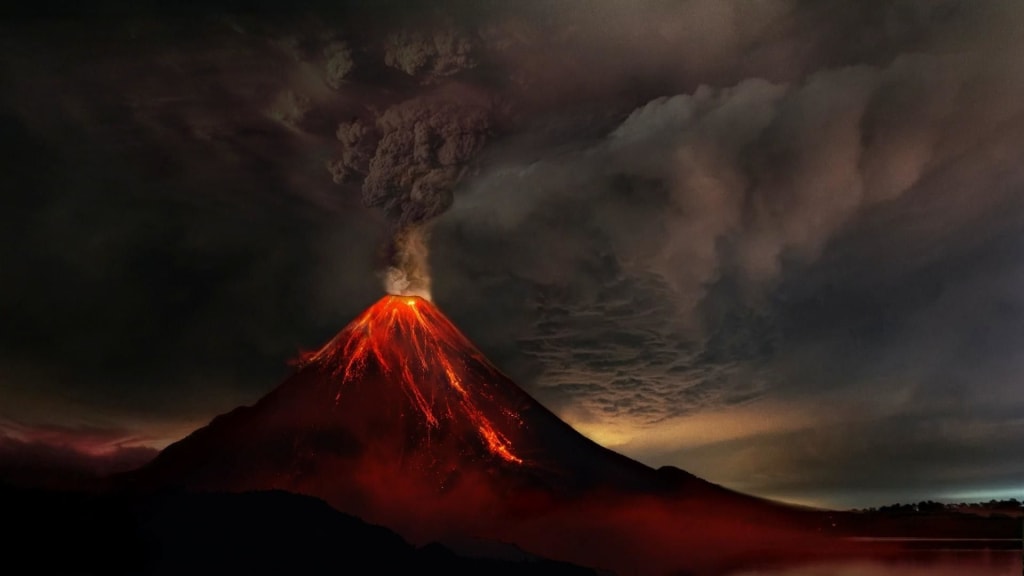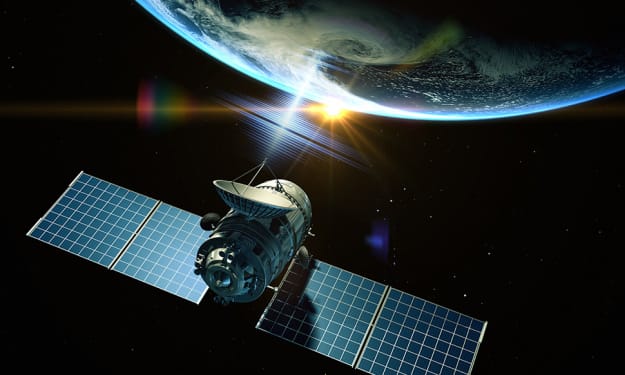The History of Volcanic Eruptions
Read to now more

Volcanoes have been around for as long as the Earth has existed, and they've been making a big bang for themselves ever since. In ancient civilizations, volcanic eruptions were often considered acts of the gods, with communities offering sacrifices to appease their wrath. Fast forward to the Middle Ages, and you'll find that volcanic eruptions played a significant role in shaping European history. Who would have thought that an eruption of Mount Etna in 1169 could have influenced the outcome ofthe Norman conquest of southern Italy? But that's just the tip of the lava flow. The modern era has seen incredible advancements in our understanding of volcanic eruptions and their impact on the environment. From predicting eruptions to responding to their aftermath, the history of volcanic eruptions is a tale of human ingenuity and resilience in the face of nature's fury. So, grab a bucket of popcorn and get ready for a fiery ride through history!
Early Records of Volcanic Eruptions
Ah, the good old days of volcanic eruptions. A time when people believed that these geological events were acts of the gods and offered sacrifices to appease their wrath. The early records of volcanic eruptions are some of the most fascinating and entertaining in the history of these natural disasters. From the epic eruption of Vesuvius in 79 AD that buried the city of Pompeii to the somewhat comical tales of early civilizations trying to outrun an impending eruption, the early records of volcanic eruptions are nothing short of a wild ride.
Vesuvius, in particular, has been a hot topic for centuries, pun intended. The 79 AD eruption was one of the most significant in the history of the Roman Empire, burying the bustling city of Pompeii and its citizens under a thick layer of ash and pumice. The accounts of this eruption, as recorded by Pliny the Younger, have been a source of fascination and study for generations. But Vesuvius was just the beginning. From the explosive beauty of Santorini in the Aegean Sea to the eruption of Mount Merapi in Indonesia that caused people to run for their lives, the early records of volcanic eruptions are a testament to the power and unpredictability of nature.
So, next time you hear about a volcanic eruption, take a moment to think about the early records of these geological events. From the myth and lore surrounding these eruptions to the tales of bravery and survival, the history of volcanic eruptions is a rich tapestry of human experience and natural wonder. So, hold onto your lava-proof helmet and let's continue our journey through the history of volcanic eruptions!
Volcanic Eruptions in the Middle Ages
The Middle Ages were a time of knights in shining armor, kingdoms at war, and...volcanic eruptions? Yes, you heard that right! Volcanic eruptions played a significant role in shaping the course of European history during this period. From influencing the global climate to causing widespread famine, the Middle Ages were witness to some of the most significant eruptions in history. So, grab your medieval helmet and let's delve into the fiery world of volcanic eruptions in the Middle Ages.
One of the most famous eruptions of the Middle Ages was that of Mount Etna in 1169. This eruption caused widespread destruction in southern Italy and played a role in the Norman conquest of the area. But volcanic eruptions weren't just causing chaos on the battlefield, they were also having a significant impact on the global climate. The eruption of Mount Tarawera in New Zealand in 1886 caused widespread cooling and crop failures, leading to famine and societal upheaval.
But it wasn't all doom and gloom for our medieval friends. Volcanic eruptions also had a hand in shaping the cultural landscape of the period. From the hot springs created by volcanic activity that were believed to have healing properties to the fertile soils produced by volcanic eruptions, the Middle Ages were shaped by these geological events in ways that are still felt today.
The Modern Era of Volcanic Eruptions
Welcome to the modern era of volcanic eruptions, where science and technology meet the power of nature. The modern era has seen a wealth of advancements in our understanding of volcanic eruptions and our ability to predict and prepare for these geological events. But don't let the term "modern" fool you, volcanic eruptions are still as unpredictable and awe-inspiring as ever. So, let's put on our lab coats and step into the world of the modern era of volcanic eruptions.
The modern era of volcanic eruptions has brought with it a wealth of advancements in our ability to study and predict these geological events. From the development of early warning systems to the use of satellites to monitor volcanic activity, scientists are now better equipped than ever to track and understand the inner workings of volcanoes. This increased knowledge has allowed us to better prepare for and respond to volcanic eruptions, reducing the impact of these events on local communities.
But despite these advancements, volcanic eruptions are still as unpredictable and awe-inspiring as ever. From the explosive eruption of Mount Pinatubo in the Philippines in 1991 to the recent eruption of Iceland's Eyjafjallajökull in 2010, modern volcanic eruptions are still capable of causing widespread destruction and disruption. The eruption of Eyjafjallajökull, in particular, caused widespread chaos, with the ash cloud from the eruption grounding flights across Europe and causing widespread travel disruption.






Comments
Mirza Mirza is not accepting comments at the moment
Want to show your support? Send them a one-off tip.